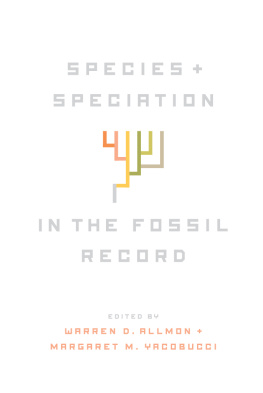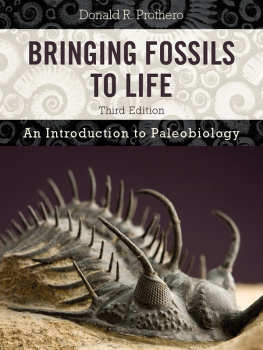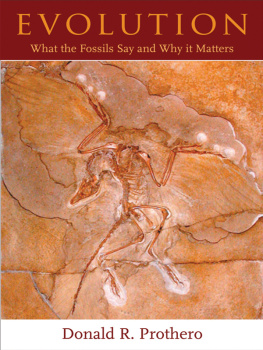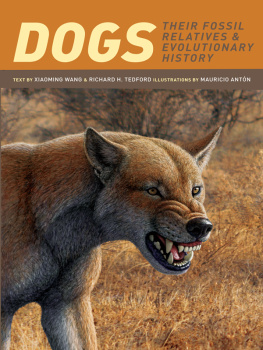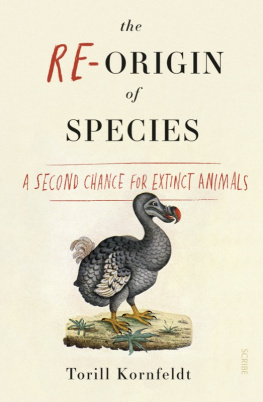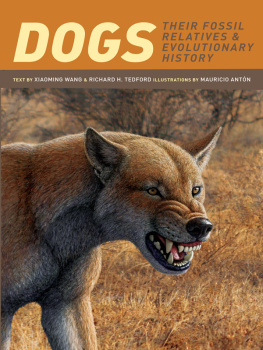Warren D. Allmon - Species and Speciation in the Fossil Record
Here you can read online Warren D. Allmon - Species and Speciation in the Fossil Record full text of the book (entire story) in english for free. Download pdf and epub, get meaning, cover and reviews about this ebook. year: 2016, publisher: University of Chicago Press, genre: Politics. Description of the work, (preface) as well as reviews are available. Best literature library LitArk.com created for fans of good reading and offers a wide selection of genres:
Romance novel
Science fiction
Adventure
Detective
Science
History
Home and family
Prose
Art
Politics
Computer
Non-fiction
Religion
Business
Children
Humor
Choose a favorite category and find really read worthwhile books. Enjoy immersion in the world of imagination, feel the emotions of the characters or learn something new for yourself, make an fascinating discovery.
- Book:Species and Speciation in the Fossil Record
- Author:
- Publisher:University of Chicago Press
- Genre:
- Year:2016
- Rating:3 / 5
- Favourites:Add to favourites
- Your mark:
- 60
- 1
- 2
- 3
- 4
- 5
Species and Speciation in the Fossil Record: summary, description and annotation
We offer to read an annotation, description, summary or preface (depends on what the author of the book "Species and Speciation in the Fossil Record" wrote himself). If you haven't found the necessary information about the book — write in the comments, we will try to find it.
Species and Speciation in the Fossil Record — read online for free the complete book (whole text) full work
Below is the text of the book, divided by pages. System saving the place of the last page read, allows you to conveniently read the book "Species and Speciation in the Fossil Record" online for free, without having to search again every time where you left off. Put a bookmark, and you can go to the page where you finished reading at any time.
Font size:
Interval:
Bookmark:
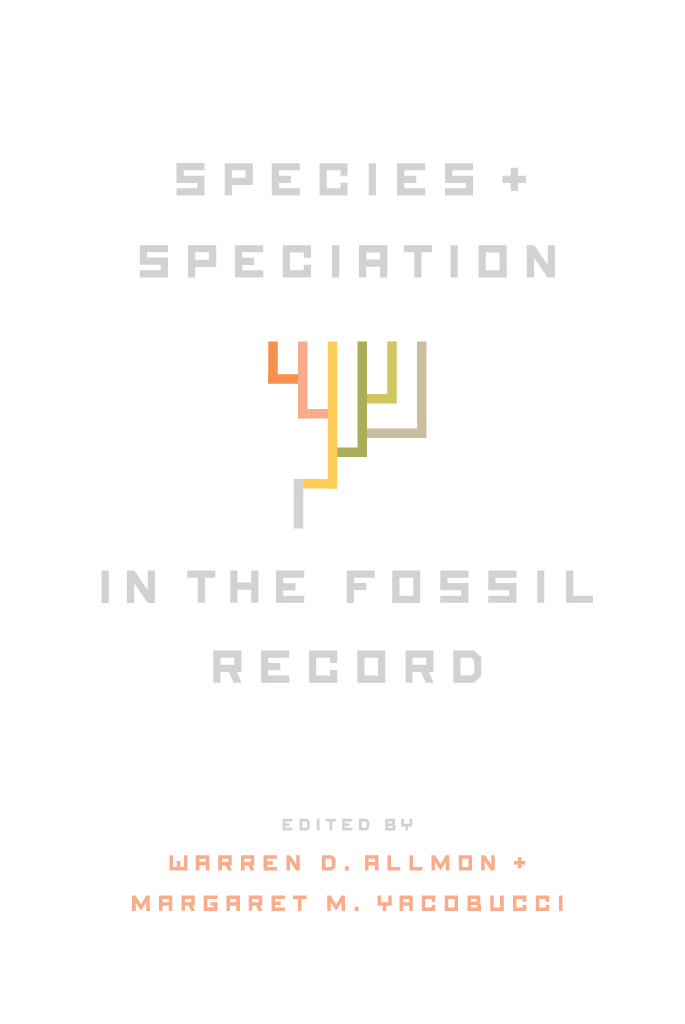
EDITED BY WARREN D. ALLMON AND MARGARET M. YACOBUCCI
THE UNIVERSITY OF CHICAGO PRESS
CHICAGO AND LONDON
Warren D. Allmon is director of the Paleontological Research Institution in Ithaca, New York, and professor in the Department of Earth and Atmospheric Sciences at Cornell University.
Margaret M. Yacobucci is professor of geology at Bowling Green State University.
The University of Chicago Press, Chicago 60637
The University of Chicago Press, Ltd., London
2016 by The University of Chicago
All rights reserved. Published 2016.
Printed in the United States of America
25 24 23 22 21 20 19 18 17 16 1 2 3 4 5
ISBN -13: 978-0-226-37744-5 (cloth)
ISBN -13: 978-0-226-37758-2 (e-book)
DOI : 10.7208/chicago/9780226377582.001.0001
Library of Congress Cataloging-in-Publication Data
Names: Allmon, Warren D., editor. | Yacobucci, Margaret M. (Margaret Mary), editor.
Title: Species and speciation in the fossil record / edited by Warren D. Allmon and Margaret M. Yacobucci.
Description: Chicago : The University of Chicago Press, 2016. | Includes bibliographical references and index.
Identifiers: LCCN 2015048963| ISBN 9780226377445 (cloth : alk. paper) | ISBN 9780226377582 (e-book)
Subjects: LCSH : Evolutionary paleobiology. | Fossils. | Evolution (Biology)
Classification: LCC QE 721.2.E85 S64 2016 | DDC 576.8/6dc23 LC record available at http://lccn.loc.gov/2015048963
 This paper meets the requirements of ANSI/NISO Z 39.48-1992 (Permanence of Paper).
This paper meets the requirements of ANSI/NISO Z 39.48-1992 (Permanence of Paper).
W. D. Allmon and M. M. Yacobucci
D. Sepkoski
W. Miller III
W. D. Allmon
W. D. Allmon and S. D. Sampson
S. J. Hageman
L. H. Liow and T. Ergon
A. F. Budd and J. M. Pandolfi
M. M. Yacobucci
C. E. Schweitzer and R. M. Feldmann
W. I. Ausich
W. E. Bemis
A. L. Stigall
M. J. Hopkins and S. Lidgard
D. R. Prothero, V. J. Syverson, K. R. Raymond, M. Madan, S. Molina, A. Fragomeni, S. DeSantis, A. Sutyagina, and G. L. Gage
Warren D. Allmon and Margaret M. Yacobucci
In their landmark book, Coyne and Orr (2004, 1) note that one of the most striking developments in evolutionary biology during the last 20 years has been a resurgence of interest in the origin of species. This resurgence is well-evidenced by the enormous volume of literature, including not just hundreds of individual papers but also at least two dozen books and journal special issues in the past two decades. The corner of taxonomy that addresses the species problem now even has its own name: eidonomy (Dubois 2011).
What exactly are all these people writing about? A lot of it is new information, both from ecology and from the continuing tsunami of molecular sequence data and what it reveals about phylogeny and genetic differences associated with speciation. Some is focused on new or newly sharpened theoretical paradigms, such as adaptive or ecological speciation, or on new mathematical models. A lot of it is controversialthe continuation of the protean and seemingly indestructible species problem, or arguments over which species concept (among a list now approaching 30; Wilkins 2006) is best.
Yet largely missing from this flood of new research and rethinking is paleontology, so much so that amidst the multitude of species concepts, one might be forgiven for proposing yet one more. It might be called the Janus concept (Allmon 2011), and it would describe how most paleontologists recognize and study species in the fossil record. According to the Janus concept, species are both real and imaginary, central and marginal, the focal point of macroevolution and incomparable to anything studied by neontologists. Formal adoption of this concept would acknowledge the reality of modern paleobiology, which appears to be able to maintain these mutually incompatible views of species without much difficulty. Paleontologists talk about and use species but dont uniformly respect them; we constantly discuss the evolution of species, but are simultaneously a bit queasy about taking them seriously.
Although you wont see it stated explicitly very often, something close to the Janus concept has long been, and remains, implicit in much of paleobiology. (This might in some ways be similar to the 19th- and early 20th-century views on the atom [Knight 1967]. It could be inferred from indirect evidence that matter was comprised of atoms, even though the atoms themselves could not be directly seen. This analogy demonstrates that a lot of good science can be done even if direct observation is not possible.)
Consider the following. Species and speciation feature prominently in a large and growing body of paleontological studies of macroevolutionary pattern and process, from studies of individual lineages or clades (see almost any issue of Journal of Paleontology), to tempo and mode (e.g., Eldredge and Gould 1972; Gould and Eldredge 1977; Eldredge and Cracraft 1980; Cracraft 1981; Barnosky 1987; Prothero 1992; Erwin and Anstey 1995; Jackson and Cheetham 1999; Geary 2009; Brett 2012; Hunt 2012), to wider studies of origination and extinction (e.g., Jablonski 1986a,b, 1987, 1997, 2008; Allmon et al. 1993, 1996; Sepkoski 1998; Lieberman 1999, 2001a,b; Jablonski and Roy 2003; Etienne and Apol 2008; Benton 2010). Even more broadly, much of the paleobiological revolution of the 1970s1980s (Sepkoski 2012) was based on thinking about what species look like in the fossil record and what we can learn about them from studying fossils (e.g., Eldredge and Gould 1972; Stanley 1979, 1982, 1986; Eldredge 1979, 1985; Gould 2002).
Yet amidst all this discussion of species, the paleobiological literature is also filled with qualifiers and cautions about using species in the fossil record, or equating such species with those recognized among living organisms. Much of this skepticism has been expressed by neontologists. Coyne and Orr, for example, state that recognition of fossil species is necessarily based on no more than reasonable guesses about the likelihood of reproductive isolation from discontinuities between phenotypes (2004: 4546). Paleontologists themselves, however, have frequently seemed scarcely more optimistic (e.g., Schopf 1979; Gingerich 1985; Jablonski et al. 1986; Raup and Boyajian 1988; Hoffman 1989; Smith 1994; Levinton 2001; Pearson and Harcourt-Brown 2001; Forey et al. 2004; Benton 2010, 1479). For example, it is common to defend the use of higher taxa (families or genera) in large-scale paleodiversity studies in part because species are seen as challenging to recognize or differentiate in the fossil record (e.g., Sepkoski 1998; see discussion in Hendricks et al. 2014).
An exception to this pattern of paleontological pessimism about species is cladistics/phylogenetic systematics. Several paleontologists were involved in the early years of the phylogenetic revolution (e.g., Eldredge and Cracraft 1980; Cracraft 1981), and some of these authors did indeed discuss the nature of species. More recently, there has been some paleontological debate on the perennial topic of phylogeny vs. classification, with paleontologists arguing for (e.g., Brochu and Sumrall 2008) or against (e.g., Benton 2000) the PhyloCode, which has touched on the issue of species. Yet, other than the substantial consequence that cladistic techniques are now standard operating procedure for many paleontologists (e.g., Smith 1994; Foote and Miller 2006), the impact of these discussions on paleontological thinking about species seems to have been limited.
Font size:
Interval:
Bookmark:
Similar books «Species and Speciation in the Fossil Record»
Look at similar books to Species and Speciation in the Fossil Record. We have selected literature similar in name and meaning in the hope of providing readers with more options to find new, interesting, not yet read works.
Discussion, reviews of the book Species and Speciation in the Fossil Record and just readers' own opinions. Leave your comments, write what you think about the work, its meaning or the main characters. Specify what exactly you liked and what you didn't like, and why you think so.

